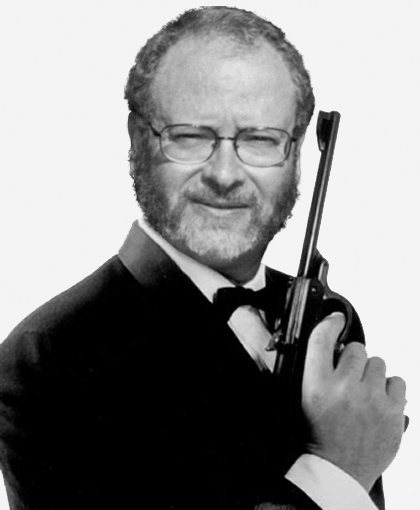There has been endless discussion
and much confusion over what kind of president Donald Trump will be. In foreign policy, is he the opponent of the
Iraq War, or a leader staffing his administration with warriors? One day he meets with Al Gore, the next he
appoints a climate change opponent to the Environmental Protection Agency. Who really is the next person to sit in the
White House?
To understand how Donald Trump will
handle the presidency, it is best to assume that there will always be three
Donald Trumps—the policy president, the political president, and the emotional
president—each operating alongside the other, simultaneously.
The policy president will be the most conventional. In the best article so far analyzing Trump’s
actual positions (as opposed to his rhetoric), Doyle McManus explained, “in Trump’s picks for economic and domestic policymaking
jobs, there’s a consistent underlying thread. And no, it’s not that so many of
them are billionaires….It’s Republican orthodoxy. Trump’s choices have
all been thoroughgoing conservatives who believe in the free market,
deregulation and, wherever possible, privatization of government functions.
Most of them could have been nominated by any GOP nominee….” Other evidence points to this
conclusion as well. His economic
leadership is as conventional a Republican business dominated team as he could
pick, going with the same setup as George W. Bush, appointing Goldman Sachs veterans
to head Treasury and the National Economic Council. The
New York Times reported, “Business leaders, once wary, are now expressing
excitement that one of their own is headed toward the White House. And Wall
Street is bordering on the ecstatic. A month
after Donald J. Trump’s election, a series of pro-business
cabinet nominations, along with promises to cut taxes, roll back regulations,
invest in infrastructure and negotiate better trade deals, have conjured up the
possibility, some executives say, of a ‘Field of Dreams’ economy.” A subsequent
article in that paper reported, “a majority of
Republicans are overjoyed with Mr. Trump’s other cabinet picks — staunch
conservatives in the world of education, health care and law enforcement….” Jonah Goldberg, the rightist columnist, remarked
on his picks, “as a conservative I find most…of them reassuring.”
In other words, when it comes to
policy, Trump is an extremely conservative Republican, not a new, populist
model. Think Rick Santorum or Paul Ryan as
president.
Then there is Trump the political
president. This is the figure that will
utter intensely divisive comments to gin up voters, who attacks media,
political correctness, and any and every group he feels he can get mileage
from: immigrants, Muslims, women, the
disabled. For this aspect of his
presidency the top adviser is Steve Bannion, a self-described “disrupter” who
revels in attacking the status quo and fanning resentment. This is President Trump working crowds,
seeking support and votes at the expense of many Americans, to win elections. The question here is not what policies the
president-elect will sponsor, but what messages he sends to his followers. In North Carolina a man called the head of an
Islamic center in Asheville attacking this religion. When the Muslim leader
asked if the man was threatening him, he replied, “I don’t have to. My president will take care of you for me.”
And finally, there is the emotional
president, the one who expresses neither policy nor political positions, nor
the advice of advisers, but who has deep personal needs. A lot of what Trump does results from growing
up with a father who, while economically successful, worked the low status
outer boroughs like Brooklyn and Queens.
Quick interlude: I grew up in the Bronx, of immigrant
parents. Early in college I decided to
get my mother a gift from Tiffany’s.
Walking into the flagship store on Fifty-Seventh and Fifth, I selected
an inexpensive item. An incredibly
genteel older woman took my order; sitting at her desk she wrote out my order
and filled out the form. When she got to
the address I mentioned the Bronx; she looked across at me and as sweetly as
you could imagine, inquired “Do they have a Zipcode up there?” as if it was the
wilds of North Dakota.
Donald Trump felt this resentment, instead
breaking into the elite Manhattan real estate market, something his father
never achieved. Yet the insecurity
remains. This is the deferential Trump,
seeking approval from Barack Obama, a sitting president, or during a meeting
with the New York Times’ editors and columnists.
And this is also the president who tweets
deeply personal resentments in the early hours of the morning. Lauren Batchelder, an 18 year old college
student, had told Trump at a public rally she did not feel he “was a friend to
women.” Trump tweeted in reprisal that
she was an “arrogant young woman” and a Clinton plant. Batchelder talked about
what happened for the first time recently with a reporter for the Washington
Post, and that paper described how, “Her phone began ringing with callers
leaving threatening messages that were often sexual in nature. Her Facebook and
email inboxes filled with similar messages. As her addresses circulated on
social media and her photo flashed on the news, she fled home to hide. ‘I didn’t really know what anyone was going to
do,’ said Batchelder, now 19….” At the
time Trump had 5 million Twitter followers; now he has 17 million.
McManus concluded his insightful piece, “in practice, Trumpism looks like mainstream
conservatism plus tougher trade negotiations – and now, circuses. Just
like the campaign.” We are getting three President Trumps, not just one. The gifts continue to come.
